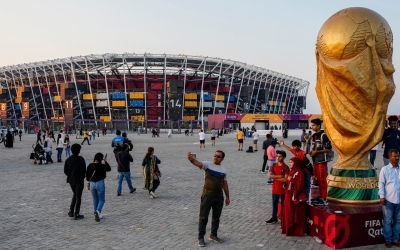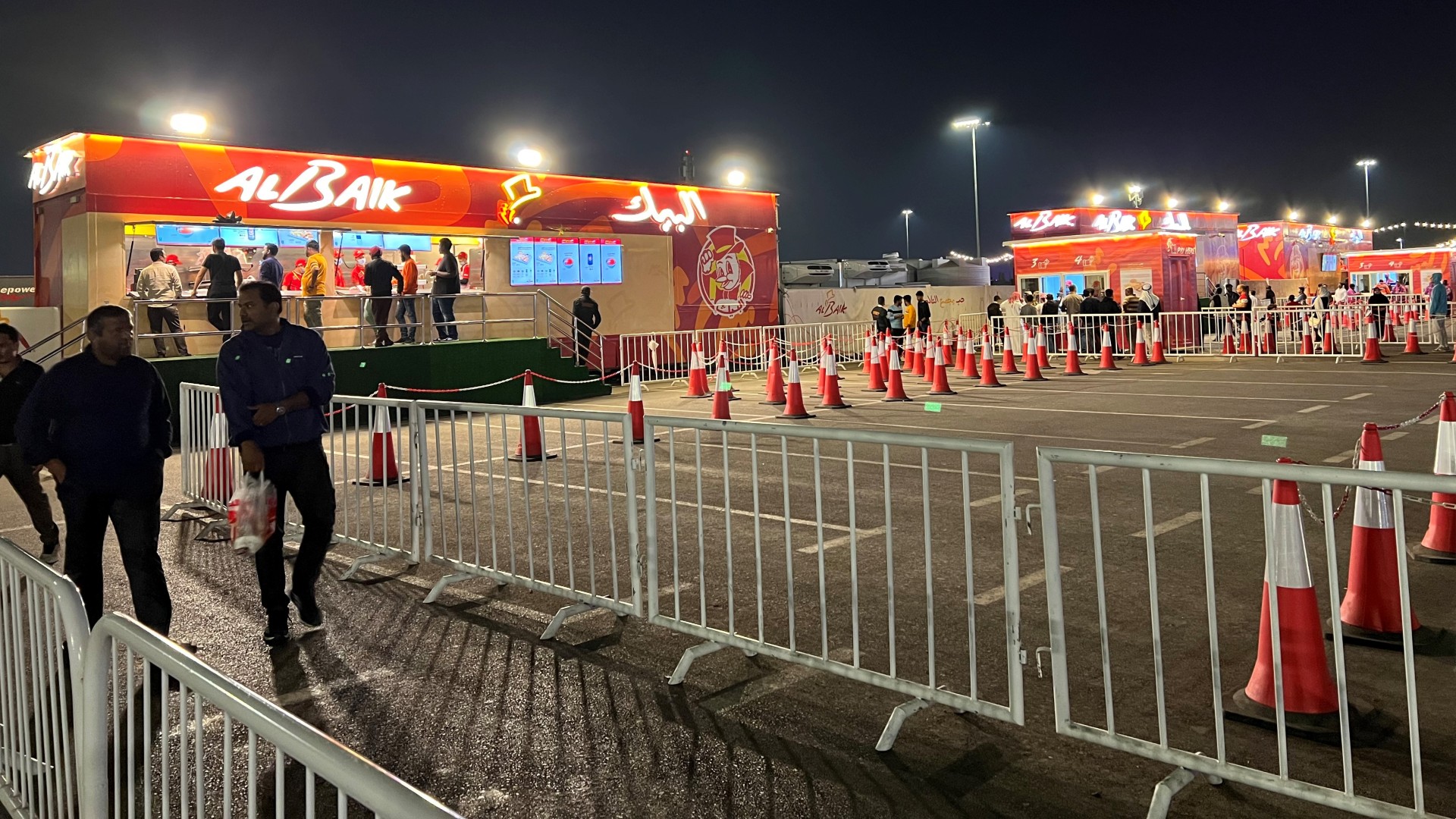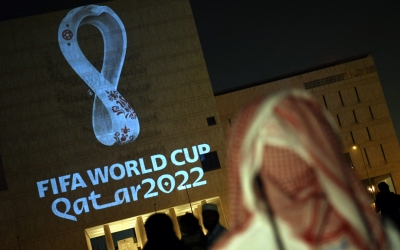Qatar World Cup: How the tournament hurt Doha's small restaurants and cafes

The Qatar World Cup may have proven profitable for multinational corporations, but several Doha-based restaurants have told Middle East Eye that they suffered severe financial losses after fans avoided eateries deemed to be too far from hotels, stadiums, fan zones and metro stations.
The gas-rich nation reportedly forked out $220bn since it won the right to host the men's World Cup more than 12 years ago, with much of that money being spent on a new metro system, roads, a new airport, neighbourhoods and even an entirely new city.
While the month-long tournament concluded on 18 December with one of the most gripping finals in World Cup history, restaurant and cafe owners said that they racked up huge losses after spending extra on food, merchandise and football-related paraphernalia that went unsold because of how the authorities planned the fan experience.
"I stocked more than 1,000 cartons of French fries and expected extra sales but the customer turn-out was less than what we get normally," said the partner of a five-branch sandwich-burger chain on condition of anonymity.
The restaurant owner said that many eateries had envisaged a shortage of refined flour, sugar and oil before the 29-day tournament, with some renting additional warehouses and stocking items in bulk.
Explaining the poor footfall, one of the reasons he gave was the restrictions Qatari authorities placed on private vehicles entering from Saudi Arabia.
With Qatar's national transport company Mowasalat shuttling fans from Abu Samra on the Saudi-Qatar border to the Al Messila metro station in central Doha, many stayed in Messila until close to the start of match times as the hub provided restrooms, artificial lawns for community eating, carpeted prayer spaces, and live music performances.
"One bus left every 30 seconds during the peak hours and in 150 seconds other times," a transport coordinator at Abu Samra told MEE.
Faring better after the football
Before the start of the tournament, fans needed to apply for a Hayya card - effectively a Qatari visa given to all ticket-holders.
With the card giving fans free access to the metro and buses on match days, many never ventured out from the busy areas Qatari authorities and Fifa earmarked as must-see sites, some restauranteurs said.
An official with the Supreme Committee for Delivery & Legacy (SC), the host organising body, said the free transport helped international vistors travel around the capital, but also meant many didn't get to experience the Doha that he was accustomed to.
"It's like you go to a wedding, you see the bride and groom, pose with them, take selfies, have food, enjoy the amusements and then leave without looking at the dirty kitchen," the official, who requested anonymity as he was not authorised to speak to the media, told MEE.
For restaurant owners in Matar Qadeem, an area within walking distance of the old airport, the failure to win over international visitors could be attributed to the decision to promote prominent Qatari-owned restaurants at the expense of others.
In terms of numbers, we didn't even notice a World Cup was being held, Najeeb Edakkudi, of the Thuraya Restaurant, told MEE.
"Now, after the tournament has ended, business is faring better."
OTK Raheem, a partner at Jawahar Restaurant in Doha's al-Bidda park, said while event organisers had vowed to put on the best Fifa fan festival in history, what followed was an event that squeezed many local eateries out.
Tens of thousands of fans had flocked to the fan festival at al-Bidda park, which showed every match live and played host to live music performances, cultural activities, and food and beverage kiosks.
"People hurried from the metro to the fan zones to occupy a space that afforded them the best view of the matches. After the games, they hurried to catch the first metro to their accommodation. They did so without even spending 15 minutes in the area or at the restaurants," Raheem said.
High costs
Some fans told MEE that in the rush to get to the stadiums they were shocked to find that basic foodstuffs were being sold for disproportionately higher prices than those found elsewhere in the country.
With authorities banning fans from bringing food and drink from outside into the venues, some South Asian fans said they were either forced to go hungry or smuggle in dry fruit and nuts.
They said the prices of food and drink were exorbitantly higher than elsewhere in Qatar, with concession stands charging $2.75 for bottled water, when it usually costs $0.20 and $12 for cheese sandwiches, which usually retail for $3.
At a shopping mall in the Industrial Area, an area known for housing migrant workers, some businesses said they were hit hard when camps that housed construction workers were closed.
"We hoped 3,000 security men accommodated at another labour camp would come, but they were deployed at faraway locations," an employee at Asian Town's Metro Restaurant told MEE.
Meanwhile, a grocer in Muaither blamed his losses on unscripulous landlords evicting tenants in order to host visiting World Cup fans.
"Before the tournament, the owner of a nearby property vacated his building of 60 apartments and had rented it to Fifa, but only two apartments were occupied; this has also affected my business, which was worse than that of the Covid period," the grocer said.
Reuters first reported on the evictions and rent hikes, and later how the strategy backfired when international fans opted to stay in Dubai and other Gulf cities which were less than an hour away by plane.
Still, some family-tailored restaurants reported an uptick in sales. "We had a 30 percent growth during the World Cup in our branches," Ahmad Safeer, the regional head of Zaitoon Restaurant and Grills, told MEE.
Businesses in Doha's historic Souq Waqif, which served as the beating heart of this year's tournament, also recorded good sales, retailers said.
Restaurants were packed over the course of the event and some shops selling handicrafts recorded at least double their usual turnover.
On the final day of the tournament, the SC reported that more than 1.4 million fans had visited Qatar for the tournament. That figure was considerably higher than 10 days earlier when Reuters reported that Qatar had welcomed "just over 765,000 visitors during the first two weeks".
MEE reached out to the SC for comment about the number of international visitors but did not receive a response by time of publication.
Middle East Eye delivers independent and unrivalled coverage and analysis of the Middle East, North Africa and beyond. To learn more about republishing this content and the associated fees, please fill out this form. More about MEE can be found here.








